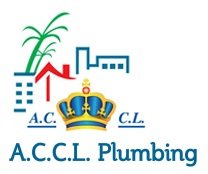Low-flow fixtures and appliances are designed to conserve water while maintaining performance. These innovative solutions are essential for reducing water consumption, lowering utility bills, and promoting sustainability. In this article, we’ll explore the benefits and types of low-flow fixtures and appliances.
Benefits of Low-Flow Fixtures and Appliances
– Water Conservation: Low-flow fixtures and appliances use significantly less water than traditional models, reducing overall water consumption.
– Lower Utility Bills: By using less water, homeowners can save money on their water and energy bills.
– Environmental Benefits: Conserving water helps reduce the strain on local water supplies and wastewater treatment plants.
– Increased Efficiency: Low-flow fixtures and appliances are designed to provide efficient performance while minimizing waste.
Types of Low-Flow Fixtures and Appliances
– Low-Flow Showerheads: These showerheads use advanced technology to provide a satisfying shower experience while using less water.
– Low-Flow Toilets: Dual-flush toilets and low-flow toilets use significantly less water per flush than traditional models.
– Faucets: Low-flow faucets and aerators reduce water flow while maintaining pressure and performance.
– High-Efficiency Washing Machines: Front-loading washing machines use less water than traditional top-loading models.
– Low-Flow Dishwashers: Energy Star-rated dishwashers use advanced technology to minimize water consumption.
How to Choose Low-Flow Fixtures and Appliances
– Look for WaterSense Certification: Products with the WaterSense label meet EPA standards for water efficiency and performance.
– Check the Flow Rate: Look for products with low flow rates (measured in gallons per minute) to ensure maximum water savings.
– Consider Your Needs: Choose products that meet your needs and preferences, such as showerheads with multiple settings.
Conclusion
Low-flow fixtures and appliances are an essential part of water conservation and sustainability. By choosing these innovative solutions, homeowners can save water, lower their utility bills, and contribute to a more environmentally friendly future. Whether you’re renovating your home or simply looking to upgrade your fixtures, low-flow options are a smart choice for a more sustainable tomorrow.

